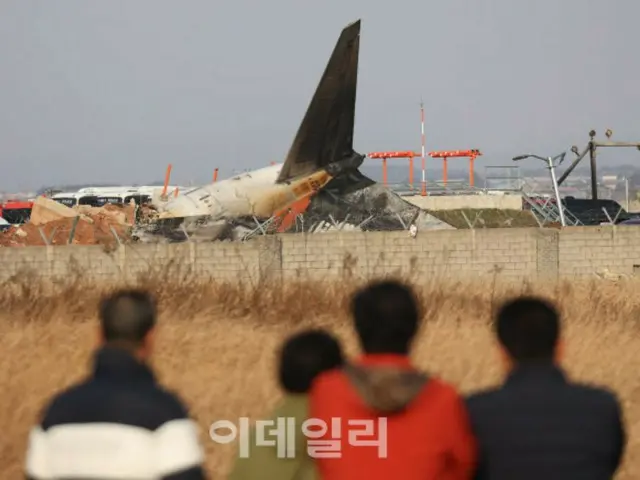"I've studied safety for 30 years, but this is the first time I've ever seen anything like this," Professor Kwon said in an interview with CBS Radio on the 13th.
"This is the first time that the black box has not been activated and recorded," said Professor Kwon. "The black box is basically a flight recorder (FDR), which contains basic aircraft data."
"The black box is very important, so it is equipped with a system that records 3,400 times the acceleration of gravity, or 1,000 degrees Celsius," he said.
"It can withstand 1100 degrees for an hour," he explained. In addition, (the reason why the black box records for the four minutes before the impact were erased was because Boeing) 737 aircraft had these two devices (FDR,
"The power going into the FDR (FDR-CVR) is powered by AC power from the aircraft's engine generator," he said, explaining, "The FDR gets power from the left engine, and the CVR gets power from the right engine."
"The fact that neither engine was preserved means that both engines were lost," he said. "Modern aircraft are designed to fly over water.
The engines are highly reliable, with the distance increasing to 120 minutes and 207 minutes. Nevertheless, in extremely rare cases such as a collision with a bird, both engines may shut down.
Professor Kwon said the probability of both engines failing is "one in seven million," and reiterated that it is "an extremely rare event."
In response to a question from the moderator about the "obligation to install an auxiliary battery," Professor Kwon said, "It is necessary to supply power to the CVR for about 10 minutes.
"The aircraft is designed to be fitted with a Rechargeable Implantable Storage (RIPS) battery," he said, but added, "This aircraft was built before this regulation was put into place."
When the moderator then asked about the presence or absence of an independent battery device, Professor Kwon replied, "Basically, the engine
"When two of the power supplies go out, the APU (auxiliary engine) is activated," he said. "When the auxiliary engine is activated, normal supply resumes, so there is no problem. But in this case, the emergency was so severe that
"The situation was so dire that the auxiliary engine itself could not be started," he said. "It is speculated that the right engine struck a bird while the aircraft was approaching, causing it to cut out and catch fire.
"The left engine also appears to have collided with a bird, causing both engines to shut down," he said. "In this case, the hydraulic system doesn't work, so the aircraft's control stick becomes very heavy. This makes it a very difficult situation."
Professor Kwon also said that in the absence of black box records, "in the end, we can only speculate (on the cause of the accident)," and added, "We don't know exactly how many watts and kilometres the aircraft was using."
"It has become difficult to clarify how the collision occurred at a speed of 1.5 meters and how the fire broke out in this way."
2025/01/13 11:39 KST
Copyrights(C) Edaily wowkorea.jp 85

